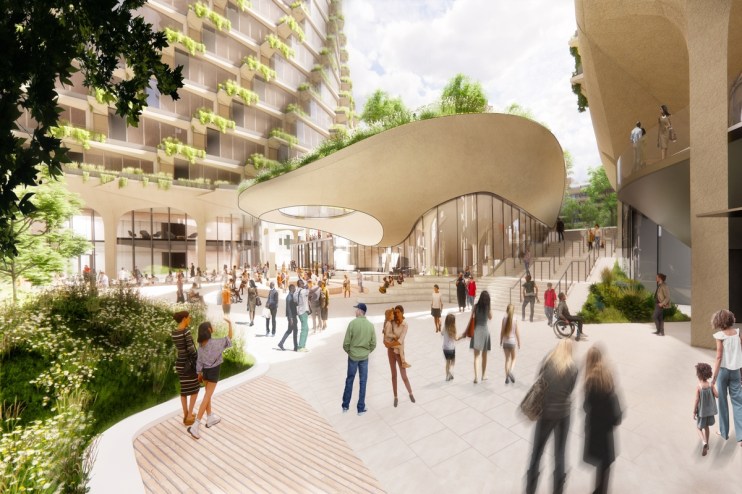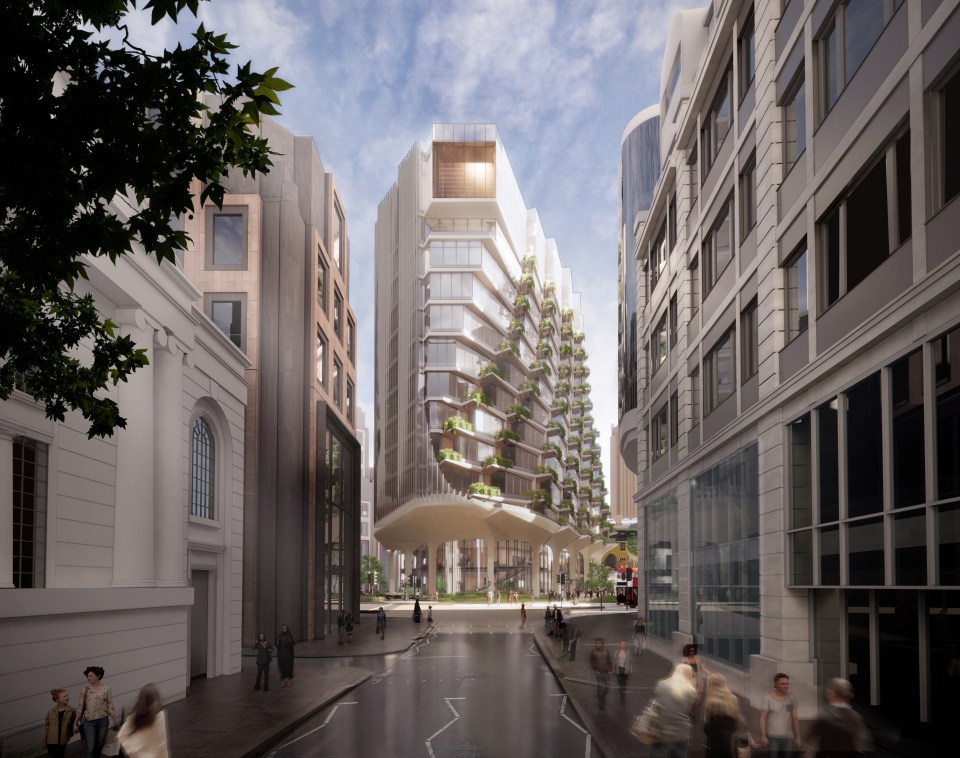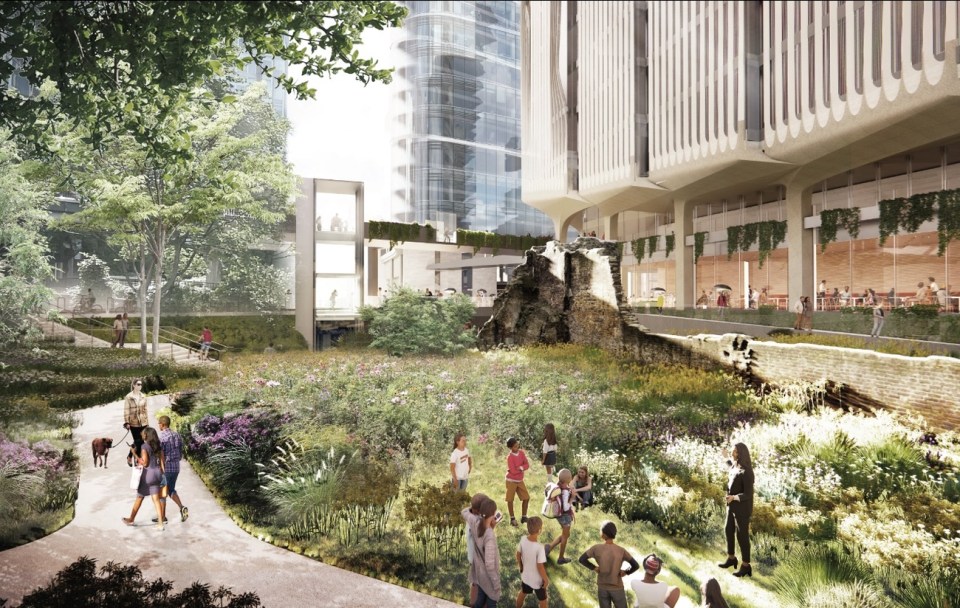
A hangover from a post-war era of concrete construction, heritage site, or, as described by the Londonist, the “world’s largest broken flight departures board”, Bastion House in the City of London’s Barbican is possibly all three. But it has now become the latest flash point between developers and Michael Gove.
On Wednesday, The City of London Corporation Planning Applications-Sub Committee planning officers approved plans by Sheppard Robson and Diller Scofidio + Renfro to demolish Bastion House and its neighbouring building, the former Museum of London.
However, communities secretary Michael Gove put a pause on the demolition plans by issuing an Article 31 order.
The Article 31 order stated: “Article 31 Holding Direction issued[1]In exercise of his powers under Article 31 of the Town and Country Planning (Development Management Procedure) (England) Order 2015, the Secretary of State hereby directs your Council not to grant permission on this application without specific authorisation.
“This direction is issued to enable him to consider whether he should direct under Section 77 of the Town and Country Planning Act 1990 that the application should be referred to him for determination.”
Plans drawn up for the City of London Corporation feature 13 and 16-storey buildings on the site, known as London Wall West, on the edge of the Barbican estate.
“The City of London is a global economic powerhouse, and it is vital we continue to signal to investors that we are keeping it that way, by delivering a centre of collaboration and innovation for the hundreds of thousands of people who work here,” Chairman of the City of London Corporation Planning and Transport Committee, Shravan Joshi, said when the plans were approved.
A City of London Corporation Spokesperson said: “The City of London Corporation Planning Application Sub-Committee has resolved to grant planning permission for the London Wall West Proposals.
We acknowledge the Section 31 Holding Direction issued by Department for Levelling Up, Housing and Communities and will await the Secretary of State’s final decision.”

Public consultation on the project began in Spring 2021, and received strong opposition from local activist groups. More than 800 comments were submitted objecting to the plans before the April 6 deadline, with only 14 in support.
Campaigners have argued that the project is inconsistent with the City’s 2027 net zero target.
“To destroy these two buildings and construct replacements would release over 45,000 tonnes of CO2 into the atmosphere,” Green party London Assembly member Zak Polanski said in February, adding that to demolish the buildings would be an “act of cultural vandalism”.
Barbican Quarter Action, a local group against the demolition, has said that the plans are “injurious to the future of people and the planet”.
“We continue to believe that this great City can and should do better and that, it should retain and adapt these fine buildings in line with its own policies on sustainable development.”
It is the latest in a number of high-profile property projects: last week, Westminster City Council rejected a scheme to demolish and rebuild a 1950s building on London’s Saville Row on environmental grounds.
Questions around embodied carbon, which describes all the CO2 emitted in producing materials, including extraction, manufacturing, and transport, have become a thorny issue in UK planning policy.
Demolishing a rebuilding is much more energy intensive than retrofitting, leading to a much higher embodied carbon spend.

In December last year, the City approved a ‘retrofit first’ policy, which promotes the reuse of existing buildings “where this is the most sustainable and suitable approach for a site”.
However, the Corporation has said its carbon assessment of the Barbican project found that “demolition and redevelopment of the site achieve[s] the most sustainable outcome”.
“[The new building provides] potential floorspace uplift, wider environmental and public benefits, public realm provision and the ability to deliver new and leading-edge sustainable buildings for the site,” it said.
The Museum of London closed at the end of 2022 ahead of its move to Smithfield market, by Farringdon station. It was originally earmarked for a new concert hall – dubbed the “Tate modern of music” in the city, but the plan was scrapped in 2021.
Demolition of the existing site was expected to begin in 2028, with completion scheduled for late 2033. It’s now unclear if of when the scheme will move forward.
Gove has become increasingly active in London’s planning activities recently. In mid-March he told Sadiq Khan to review his London Plan on the same day the mayor announced proposals to double levels of council house building by 2030.

